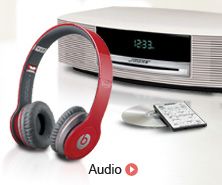

The share of revenue from sales through smartphones is also 8.6% lower for smaller retailers - an opportunity for these brands to connect with customers on smaller screens. Larger retailers (over $1 billion in annual sales) are seeing more success with mobile shopping, driving 38% more visits that result in purchases compared with smaller retailers (between $10 million to $50 million in annual sales). In 2022, smartphones drove 45% of overall online sales, but on the current growth trajectory, Adobe expects that every month will see smartphones drive the majority (over 50%) of online sales by December 2023. The last holiday season was a turning point for mobile shopping, where the majority of sales (51%) on Cyber Week came through smartphones for the first time. As consumers embrace new categories and ways to make payments online, they’re also doing so on smaller screens. Mobile shopping is expected to overtake desktop in 2023.“The strong online growth of home furnishing purchasing is expected to bolster buy now, pay later adoption, given the higher ticket prices in this category.” Additional insights from Adobe Analytics “The rise of buy now, pay later usage for groceries tells us that consumers are likely making bigger purchases online to take advantage of special promotions and stock up on staples, thus managing living expenses in more flexible ways,” explained Pandya. By contrast, apparel only grew by 8%, and electronics fell by 14%. In the first two months of 2023, groceries’ share of BNPL orders grew a staggering 40%, while home furnishings grew by 38%. To understand the types of goods that shoppers want to delay payment for, Adobe also looked at BNPL usage across major categories, including groceries, home furnishings, apparel, and electronics. In the first two months of 2023, BNPL order share was up by 10% YoY, though revenue fell by 19% YoY, indicating that consumers are using this payment method for smaller purchases. In 2022, the share of online purchases using BNPL grew by 14% YoY, with revenue from BNPL growing 27% YoY. Rising costs of living have pushed consumers toward buy now, pay later services that allow them to pay for purchases over time.
#BUY NOW PAY LATER ELECTRONICS ONLINE DRIVERS#
“Now consumers have embraced the rich ecommerce experiences that made them feel comfortable getting these necessities delivered to their doorsteps, making these categories new growth drivers in the digital economy.” “Ecommerce demand has remained resilient in an uncertain economic environment, driven in part by lasting pandemic habits where consumers had no choice but to leverage online food and home furnishing shopping services,” said Vivek Pandya, lead analyst of Adobe Digital Insights. Demand for electronics slowed following a record holiday shopping season, falling 5.4% YoY to $13.6 billion, while apparel fell 0.6% YoY, driving $11.3 billion in February spending. Groceries grew even more substantially at 26.7% YoY, driving $8.4 billion in spending. In February 2023, the home furnishings category grew 12.9% YoY, driving $9.4 billion in spending for the month. These trends have persisted in recent weeks. Similarly, though apparel was another major category and drove $171.8 billion in 2022 spending, the number actually fell by 3.8% YoY. This strong growth contrasts with electronics, which remains the top category by total spending ($202 billion), but only grew 4% YoY. In 2022, consumers spent over $126 billion on home furnishings, a 10.2% increase year-over-year (YoY), as well as $86.8 billion on groceries, a 10.8% increase YoY. Home furnishings and groceries driving growth online Adobe Analytics is part of Adobe Experience Cloud, relied upon by over 85% of the top 100 internet retailers in the US to deliver, measure, and personalize shopping experiences online. Yet at the same time, continued economic uncertainty is driving many shoppers to delay payment for purchases by using buy now, pay later (BNPL) options online.īased on Adobe Analytics data, the report provides the most comprehensive view into US ecommerce by analyzing commerce transactions online, covering over 1 trillion visits to US retail sites, 100 million SKUs, and 18 product categories. The report reveals resilient online shopping demand for groceries and home furnishings, categories that previously struggled to gain traction, and reflects the lasting impacts of pandemic-related habits. Adobe Analytics - buy now, pay later usage driven by home furnishings and groceriesĪt Adobe Summit - the world’s largest digital experience conference - Adobe released new US ecommerce insights into recent changes in the digital economy.


 0 kommentar(er)
0 kommentar(er)
